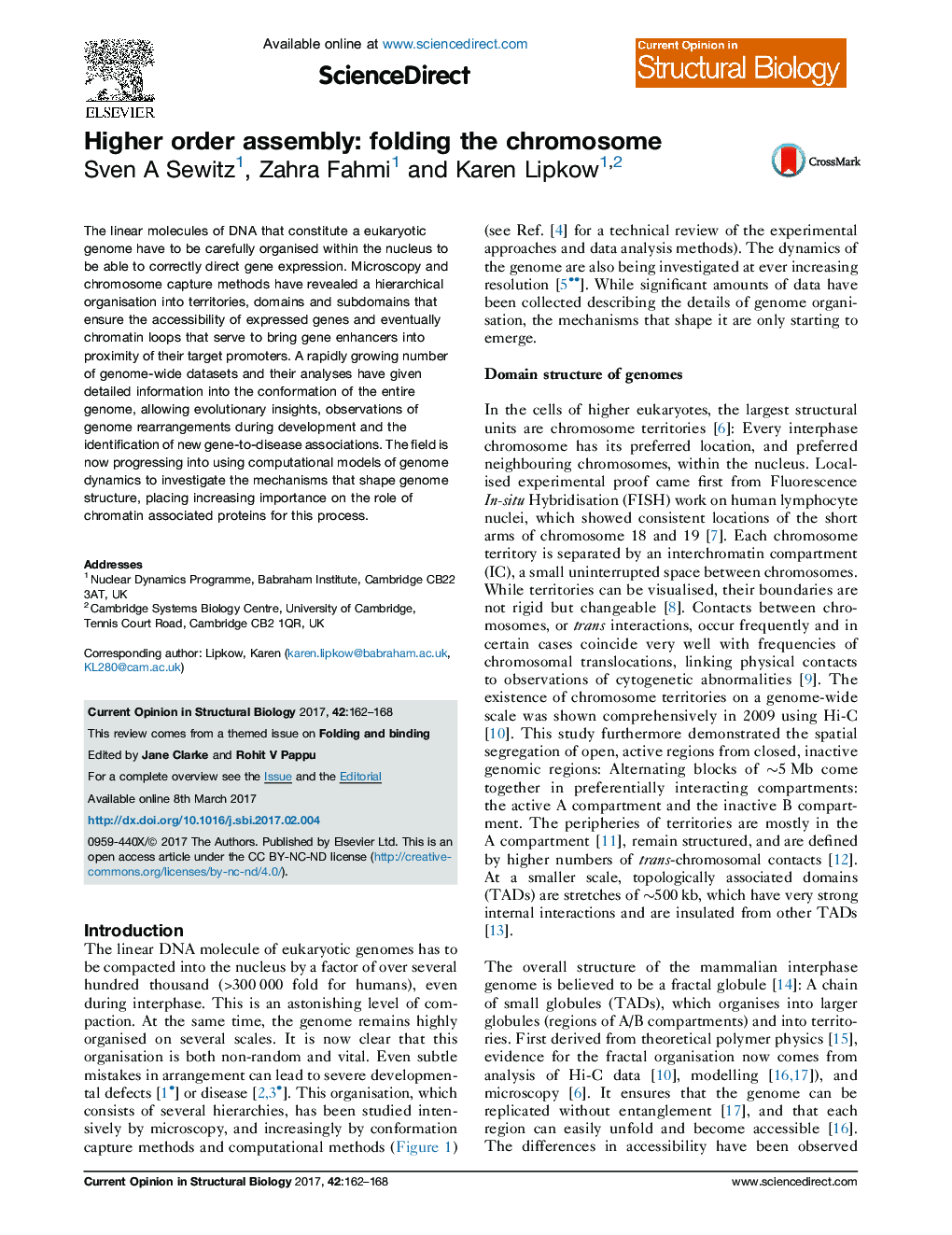| Article ID | Journal | Published Year | Pages | File Type |
|---|---|---|---|---|
| 5510884 | Current Opinion in Structural Biology | 2017 | 7 Pages |
â¢An overview of the general features of genome organisation.â¢Recent advances in determining promoter-enhancer interactions genome wide.â¢Brief description of the state of bioinformatic analysis in the field.â¢The importance of computational modelling in investigating genome architecture.â¢Outlook regarding mechanistic insights into drivers of genome organisation.
The linear molecules of DNA that constitute a eukaryotic genome have to be carefully organised within the nucleus to be able to correctly direct gene expression. Microscopy and chromosome capture methods have revealed a hierarchical organisation into territories, domains and subdomains that ensure the accessibility of expressed genes and eventually chromatin loops that serve to bring gene enhancers into proximity of their target promoters. A rapidly growing number of genome-wide datasets and their analyses have given detailed information into the conformation of the entire genome, allowing evolutionary insights, observations of genome rearrangements during development and the identification of new gene-to-disease associations. The field is now progressing into using computational models of genome dynamics to investigate the mechanisms that shape genome structure, placing increasing importance on the role of chromatin associated proteins for this process.
Graphical abstractDownload high-res image (196KB)Download full-size image
